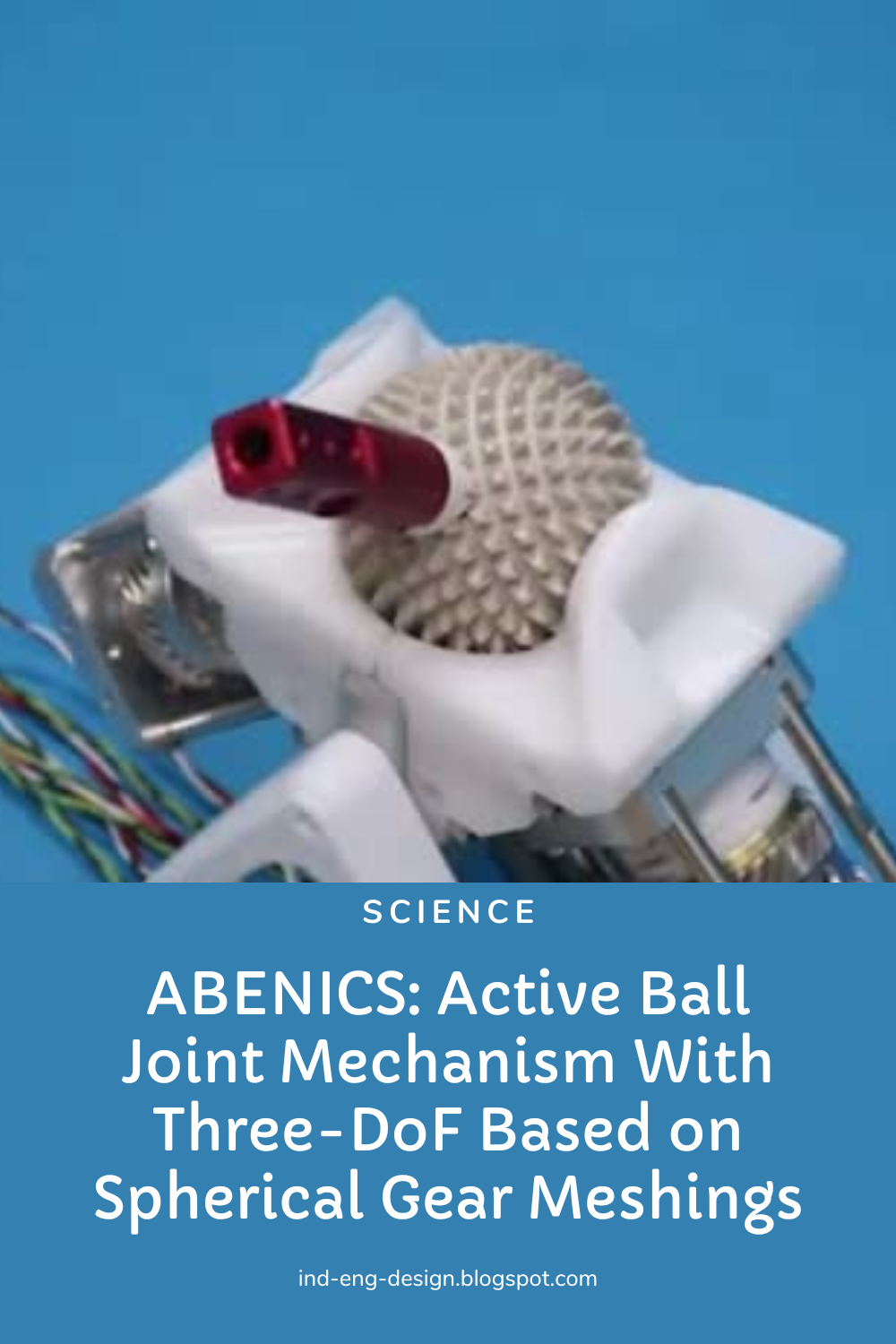Title: Revolutionizing Robotics: ABENICS - Active Ball Joint Mechanism With Three-DoF Based on Spherical Gear Meshings
Introduction:
In the realm of robotics, innovation knows no bounds. Among the latest advancements making waves is ABENICS, an acronym for Active Ball Joint Mechanism With Three Degrees of Freedom (DoF) Based on Spherical Gear Meshings. Developed by a team of engineers and researchers, ABENICS represents a breakthrough in robotic joint design, offering unprecedented flexibility, precision, and efficiency. Let's delve into the intricacies of this groundbreaking technology and its potential applications across various industries.
Understanding ABENICS:
At its core, ABENICS is a sophisticated mechanism that enables robotic joints to move in three-dimensional space with remarkable agility and accuracy. Unlike traditional ball joints that rely on passive mechanisms for movement, ABENICS incorporates active components and spherical gear meshings to achieve superior performance. This innovative design allows for smoother motion, reduced friction, and enhanced controllability, making it ideal for a wide range of robotic applications.
Key Features and Mechanisms:
The key distinguishing feature of ABENICS lies in its utilization of spherical gear meshings to facilitate motion across multiple axes. By employing active control mechanisms, such as motors and sensors, the mechanism can precisely manipulate the orientation and position of robotic limbs or appendages in three-dimensional space. This versatility enables robots equipped with ABENICS to perform intricate tasks with unprecedented dexterity and efficiency.
Advantages Over Traditional Joints:
Compared to conventional robotic joints, ABENICS offers several distinct advantages. Firstly, its active ball joint mechanism minimizes backlash and mechanical play, resulting in smoother and more precise movements. Additionally, the use of spherical gear meshings enhances load-bearing capacity and transmission efficiency, allowing for robust performance in demanding environments. Moreover, the modular design of ABENICS facilitates easy integration into existing robotic systems, making it a versatile and adaptable solution for various applications.
Potential Applications:
The versatility and performance of ABENICS open up a myriad of potential applications across industries ranging from manufacturing and logistics to healthcare and exploration. In manufacturing, robots equipped with ABENICS can perform intricate assembly tasks with unparalleled accuracy and speed, thereby increasing productivity and quality control. In the healthcare sector, ABENICS-enabled robotic systems could assist surgeons in performing minimally invasive procedures with greater precision and safety. Furthermore, in space exploration missions, ABENICS-equipped robots could navigate challenging terrain and manipulate objects with ease, advancing our understanding of the cosmos.
Future Implications and Developments:
As research and development in robotics continue to evolve, the potential applications of ABENICS are poised to expand even further. Ongoing advancements in materials science, sensor technology, and artificial intelligence hold the promise of further enhancing the capabilities and performance of ABENICS-enabled robotic systems. Moreover, collaborations between academia, industry, and government agencies will play a crucial role in driving innovation and accelerating the adoption of this transformative technology.
Conclusion:
In conclusion, ABENICS represents a paradigm shift in robotic joint design, offering unprecedented levels of flexibility, precision, and efficiency. By harnessing the power of active control mechanisms and spherical gear meshings, ABENICS enables robots to perform complex tasks with agility and accuracy previously thought impossible. As the field of robotics continues to advance, ABENICS stands as a testament to human ingenuity and innovation, paving the way for a future where robots play an increasingly integral role in shaping our world.









0 Comments